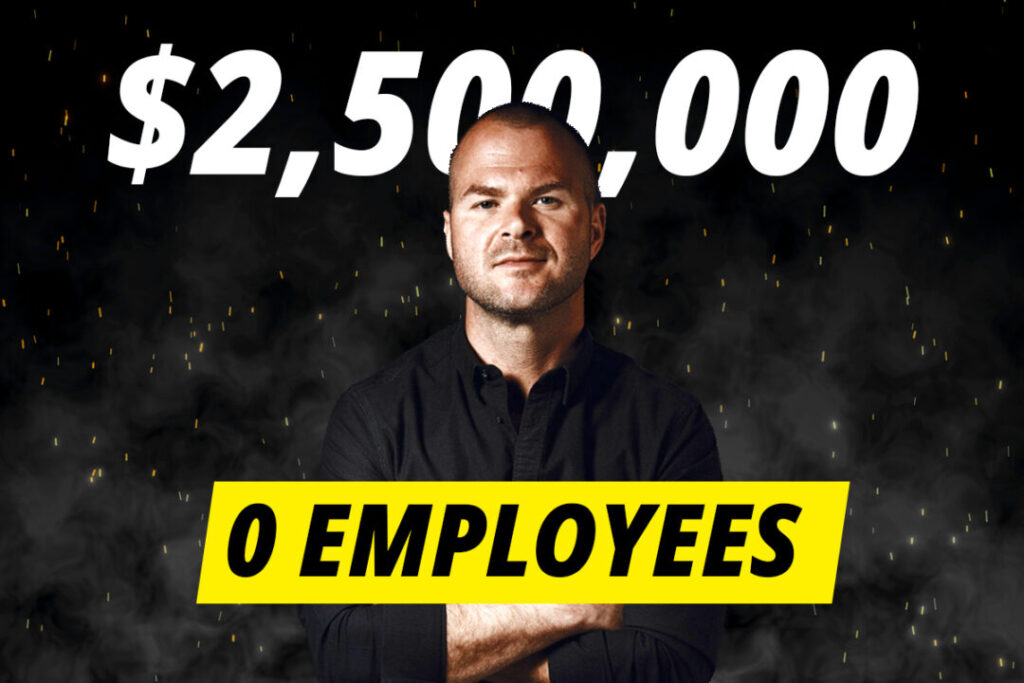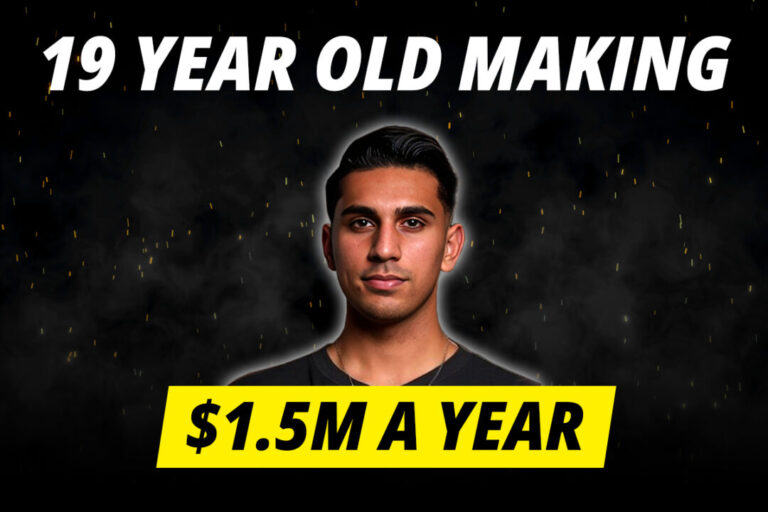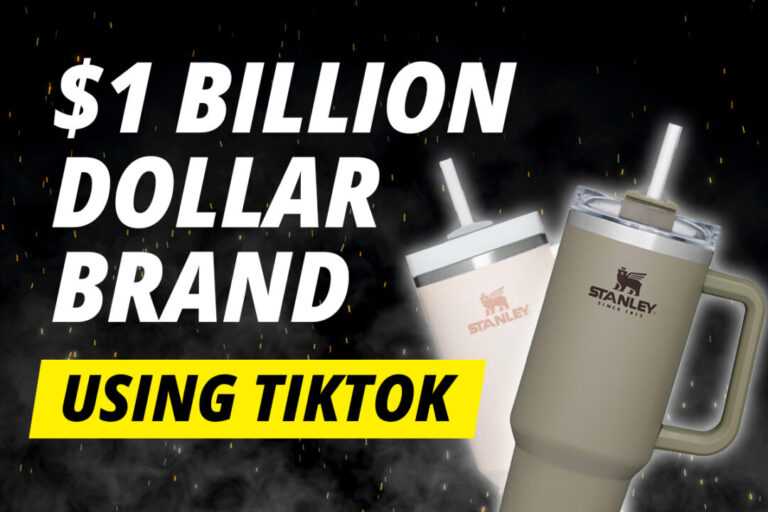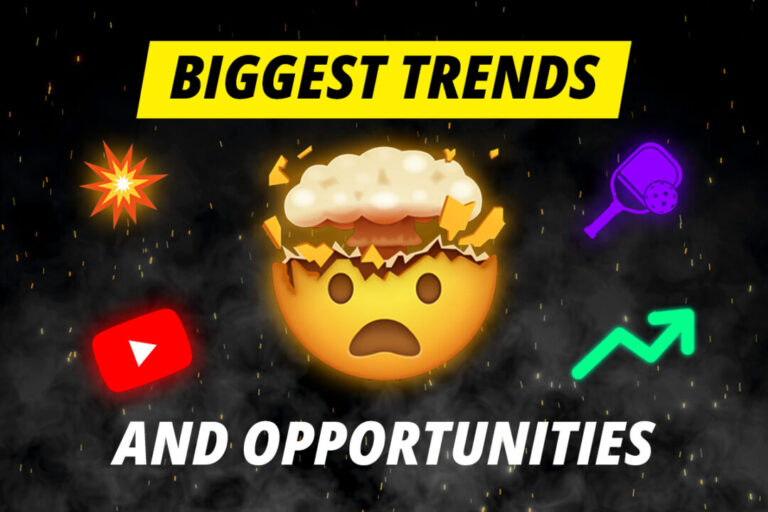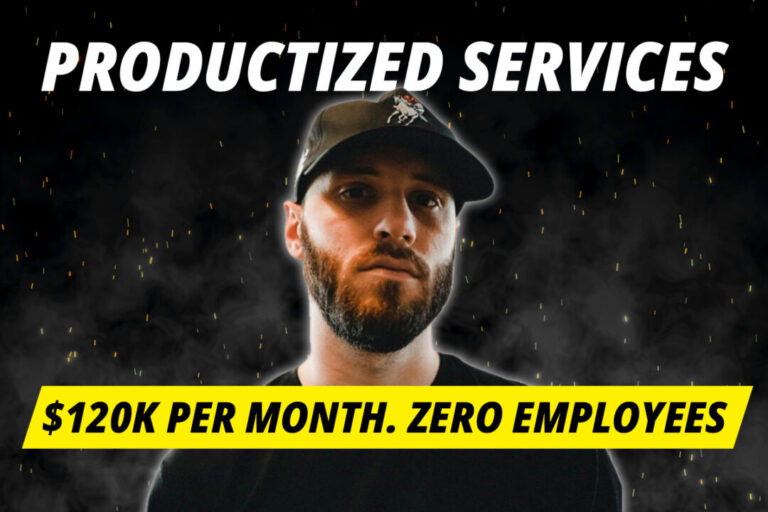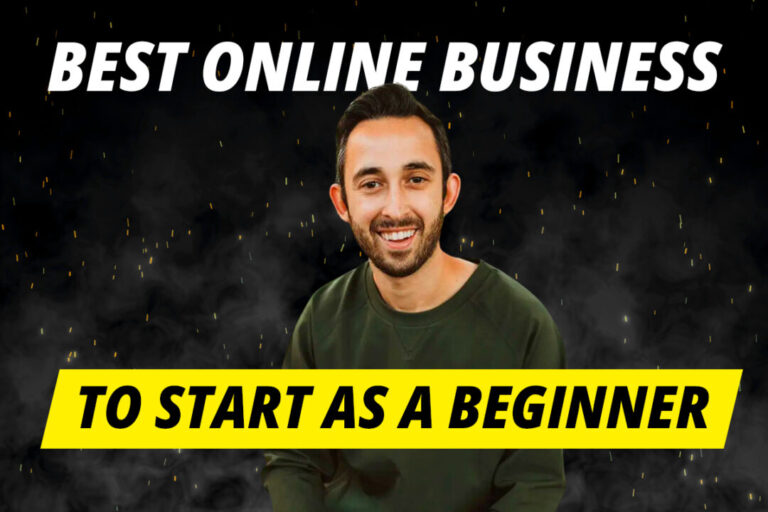In this article, you’ll learn the exact framework to turn yourself into a $2.5m per year business. 0 employees. 5 hours a day. Only spend $623 per month in costs. This is the Justin Welsh solo-business system.
Justin Welsh has carefully crafted his life, refined his schedule and optimized his systems to make $2.5m per year on his own.
To learn how he did it, I’ve read over 400 Tweets, 800 LinkedIn Posts, 30 articles, 5 hours of interviews, and even bought both his courses.
I’ve distilled all of this into an 8-step framework that anyone can use to emulate Justin’s success.
If you hate your job, it’s important you read this…
It still shocks me how normalized it has become to spend your life working in a job you hate.
People spend 50% of their lives being told what to do by a boss who doesn’t care about them.
Here’s a depressing statistic: 77% of employees are not engaged in their work. That means the vast majority of employees live their lives mindlessly following orders with no sense of direction or purpose.
For these people, Justin Welsh represents an alternative.
Justin Welsh is living proof that you can prioritize quality of life over happiness, and still make more money than you know what to do with.
If you’re unsatisfied with your life and work, Justin offers hope that you are only 8 steps away from becoming a happier, healthier, and wealthier person.

Who is Justin Welsh?
Before we dig into the million-dollar solo business system, there are a few things you need to know about Justin:
- Justin was a tech-guy, who helped two $50+ million annual recurring revenue companies.
- After 10 years of corporate life with high stress and responsibilities, Justin had a panic attack. This was Justin’s wake-up call. He decided to take back control of his life.
- Justin started sharing his expertise on LinkedIn. He now has over 470k LinkedIn followers.
- After mastering LinkedIn, Justin started writing on Twitter. He now has 440k Twitter followers.
- Justin uses his influence on LinkedIn and Twitter to drive traffic to his website, where he promotes his info products.
- Justin also has a newsletter with over 180k subscribers.
As you might have guessed, this man knows a thing or two about getting attention. He knows another thing or two about turning that attention into cold, hard cash…
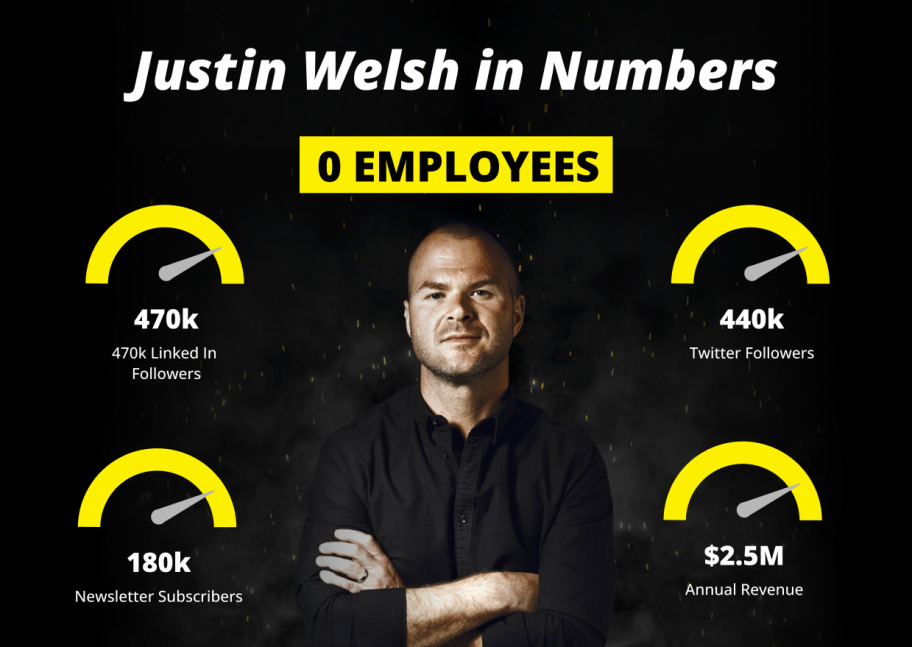
How does Justin Welsh make money?
Justin Welsh makes $2.5m per year. His costs are extremely low, so 90%+ of that is pure profit.
I've spent the last 4 years perfecting a pretty simple business model.
— Justin Welsh (@thejustinwelsh) October 13, 2023
- Digital Products
- One-click upsells
- Newsletter sponsors
- Enterprise partnerships
Products drive 70% of the $2.5M in annual business revenue.
And 90% of them sell through a simple system:
The vast majority of this revenue comes from his two courses:
- Content OS: Justin Welsh’s exact system for creating a high-quality newsletter and 6-12 pieces of high-performance social media content each week.
- LinkedIn OS: The exact system Justin used to go from zero to 470k+ followers and $4.8M+ in income without paid ads.
These courses both cost $150. A bit of quick maths tells us that he’s sold, precisely, one helluva lot of courses. Tens of thousands of them.
He also makes money from sponsorships, coaching, subscriptions and affiliates.
This man has mastered the art and science of making money online. This is the 8-part framework for anyone who is hoping to do the same.
Step 1: Find your niche
Your first mission is to decide who you like spending time with. As Justin puts it, misery doesn’t scale. You’re not going to be able to create a happy, healthy life serving people you don’t like.
“Misery doesn’t scale”
Justin Welsh
You’ll be spending a large chunk of your life helping the people in your niche, so choose them wisely.
If your perfect niche isn’t immediately obvious, you have two options:
Option 1: Identify what you’re good at
During your career, you probably realized there’s something you’re especially good at. What did you do in your previous roles that has demonstrably benefited the companies you worked for?
It could be writing, sales, project management, leadership, operations, training, strategy, branding… literally anything.
Your mission: Make a portfolio that shows people exactly how you have helped companies by doing the thing you’re good at.
Option 2: Find something you’re obsessed with
What topic do you love learning about? When you watch a YouTube video, read a book, or listen to podcasts, what topics never fail to pique your curiosity?It could be digital marketing, e-commerce, investing, health, startups, digital nomadism, home improvement… the list goes on.
Your mission: Find the leading gurus in the topic you are obsessed with. Study them relentlessly.
The solopreneur playbook:
— Justin Welsh (@thejustinwelsh) March 6, 2022
- One niche
- 1,000 true fans
- One solvable problem
- One systematized solution
Everything else is just overcomplication.
Step 2: Deeply understand your audience’s problems and hypothesize solutions
When you’ve identified your niche, find as many people working in that niche as possible. Follow them on Twitter and LinkedIn, and immerse yourself in this community.
Attend every event, webinar, and meetup possible. Join every LinkedIn Group, Twitter Space, and Facebook Group possible.
Your mission: Organize calls with 30-40 people in your niche. In that call, ask everyone what are the biggest problems they are struggling with.
You’ll start to hear common problems over and over. It’s your job to solve these problems.
Your mission: Hypothesize the solutions to these common problems. Combine your expertise with extensive research to find the most effective ways to solve these problems.
Don't chase money. Chase problems.
— Justin Welsh (@thejustinwelsh) October 9, 2023
Solve them and the money will likely appear.
Step 3: Build a small audience
When you understand people’s most painful problems, and you have a solution to solve them, you need to generate awareness for yourself as a potential problem solver.
There are tonnes of people who have built a huge personal brand (and income) from being known as the person who solves one very specific problem.
- Want to grow your business using content? Justin Welsh
- Want a better job? Austin Belcak
- Want to write better emails? Cold Email Wizard
- Want to learn to attract women? Kamilla the Dating Coach
Your mission: Find the platform (e.g. LinkedIn, Twitter, YouTube) where most of your audience is. Start making content on that platform.
In Step 6 below, I’ll reveal Justin’s proven framework for consistently creating high-value content.
When you create content around solving a specific problem, you’ll attract a small audience.
As you’ll learn, social media algorithms are unpredictable. That means not all of your audience will see every single post you create. That’s why it’s important to start an email list.
I recommend signing up to an email list platform like Beehiiv. I’ve used numerous email platform tools, and Beehiiv has been by far the cheapest tool (it’s free) which is easiest to use, and has the best features for growing your email list.
One of the best strategies to grow your email list is to offer something valuable to your audience in exchange for an email address. We call this a lead magnet. I made an in-depth tutorial on creating a lead magnet here.
Your mission: Capture your audience by creating a lead magnet and growing your email list.
A small following with a shared mission beats a large audience that skims past your content.
— Justin Welsh (@thejustinwelsh) September 15, 2023
Step 4: Create a service business
If you can generate enough impressions on your content and start growing a nice following, you can build a small service business.
A service business revolves around offering specific skills or expertise to clients in exchange for payment.
Your mission: Create a simple landing page showing off your experience and expertise. Set yourself up with Stripe to be able to collect payments. Find people 2-3 years behind you in your expertise, and help them.
If you’re struggling to get your first client, provide your services for free.
After you’ve provided lots of value, ask if you can use them as a testimonial. These testimonials are proof you know what you are doing, and will make it 100x easier to get paying clients.
1. Build a service-based business
— Justin Welsh (@thejustinwelsh) December 11, 2022
Why I like a service-based business:
Generally, easier and lower cost to get started.
Plus you can likely charge 3x to 5x what you make (hourly) at your 9 to 5 job.
Find people 2-3 years behind you in your expertise and help them.
Step 5: Productize your solution
Now, we’re going to package your niche expertise into a format that can benefit your audience at scale. Yep, we’re going to create an info product.
As you service clients and delve deeper into your niche, you’ll find common solutions.
Your mission: Write down the top 10 challenges you solved and how you solved them. Put these in a short video course or eBook that people can buy for a reasonable price.
You don’t need a fancy studio and camera to make a course. Here is a simple and inexpensive setup to create your first course:
- Camera: Use your webcam.
- Microphone: Get yourself a decent microphone. This is important because poor-quality sound is distracting. Most people use the Shure SM7B. It’s a small investment, but will make your course a lot more professional.
- Presentation slides: Use Google Slides, or Canva to create your presentation
- Recording software: Justin Welsh uses Loom. This allows you to record yourself, your voice and your screen all at the same time.
You can also use these helpful prompts in ChatGPT to help you save time creating your digital products.
Something you already do each week is a $250,000/year product other people would pay for.
— Justin Welsh (@thejustinwelsh) September 6, 2023
Step 6: Create a content system
Knowing your niche and being good at solving problems is just one piece of the pie.
A one-person business is mostly about marketing. In Justin’s world, marketing = content.
That means making content from LinkedIn and Twitter. Every. Single. Day. Without failure.
Content is a grind. It takes countless hours to research. Countless hours to write. Countless hours to edit. Countless hours to refine. The grind never stops.
That’s why you need processes and systems to consistently make as much high-quality content as you can.
Justin is a master of content systems. In this section, I’ll walk you through 3 of Justin’s proven systems for (1) ideating, (2) making content and (3) driving traffic to your products.
1. The ideation system
It’s easier to write content when you have a lot of ideas.
Justin uses an idea called the ‘Content Matrix’ to brainstorm hundreds of content ideas in one quick blast.
The matrix is essentially a spreadsheet with two elements.
- Themes (on the left column)
- Styles (on top row)
The Themes
These are all the topics related to your niche.
For example, potential themes for social media managers include:
- Social media platforms and tools
- Content scheduling
- Social media strategy
- Engagement metrics
- Automated postings
- Viral content tips
What are the things that are related to your specific specialty?
List them.
The Styles
These are the styles and structures of content that you can use.
For example, here are 8 common styles that I use:
- X vs Y: Comparing two things
- Listicle: Listed points, i.e. ‘5 best ways…’
- Observation: Simply making an observation
- Motivational: Motivation related to your niche
- Actionable: Teach people how to do something
- Analytical: Break something down into the data
- Contrarian: Say something that is against the grain
- Present vs Future: Way we do something today vs future
Here’s what the Content Matrix might look like for Justin:
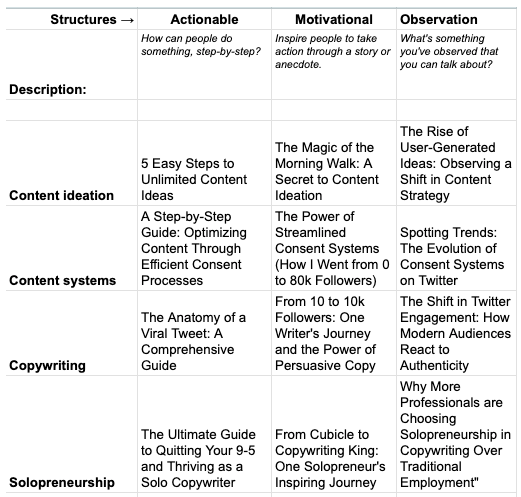
It might take you a while to brainstorm ideas at first. As you become more experienced, you’ll be able to fill out a content matrix in minutes and have enough content ideas to last months.
2. The content creation system
Justin has a methodical process to turn one idea into 6-12 different pieces of content. This is the way he manages to stay so consistent writing daily tweets, daily LinkedIn posts, and weekly newsletters.
Here’s what it looks like:
- Step 1 (Idea Capture): He regularly reads newsletters, scours social media, and watches YouTube videos in his niche. He then uses the ideation system described above to come up with content ideas. Twice a week, he ideates for 30 minutes and tries to come up with 5-7 ideas for future newsletters.
- Step 2 (Research): He digs deeper into the topic that he’ll be focussing on that week.
- Step 3 (Newsletter): Justin writes an in-depth newsletter. He uses a structured format for the newsletter to make the newsletter-writing process quicker.
- Step 4 (Editing): He makes sure the sentences are at a 5th-grade reading level. He removes all tangents. He adds visuals and images. He adds links to sources.
- Step 5 (Pre-Newsletter CTA): He teases his newsletter on Twitter and LinkedIn the day before the newsletter goes out.
- Step 6 (Post-Newsletter CTA): The day after the newsletter goes out, he posts about it on Twitter and LinkedIn.
- Step 7 (Long-form Tweet): He breaks down his newsletter into long-form Tweet or Twitter thread.
- Step 8 (LinkedIn post): He then breaks the newsletter or Twitter thread into a post for LinkedIn. Sometimes, he uses screenshots of his Twitter thread to create a Carousel post for LinkedIn.
- Step 9 (Short-form posts): From there, he uses the newsletter to create a batch of 6-8 smaller, bite-size pieces of content. He’ll stagger these short-form pieces out over the space of months. It’s not rare for Justin to use these short-form posts many months after the original newsletter.
If you want to create a system like this to optimize your own schedule, I recommend checking out Justin’s Content OS course.
Content Operating System by Justin Welsh
Justin Welsh's exact system for creating a high-quality newsletter and 6-12 pieces of high-performance social media content each week.
Learn More3. The sales system
Now you know the secret to making LOTS of content in a fraction of the time, you’ll need a system to convert your engagement into sales.
Justin has a system for that too, and it’s pretty simple.
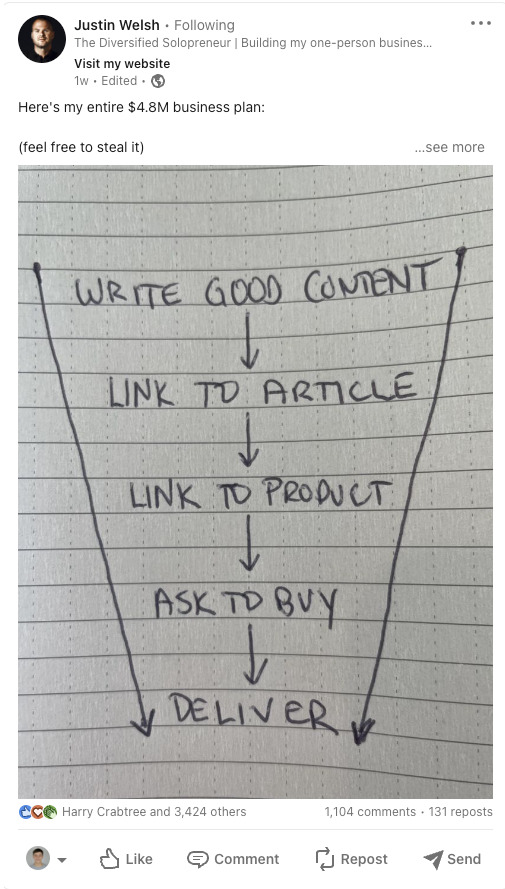
- Step 1 (Write good content): Use the process and systems above to create lots of high-quality content.
- Step 2 (Link to article/newsletter): At the end of your LinkedIn posts, or after your Tweet, provide a link to an article/newsletter on your website. This can be your own hosted website, or create your own custom page on Beehiiv. Your article should expand on the topic of the short-form content.
- Step 3 (Link to product): The article/newsletter should be detailed enough to provide high value, but should act as a sneak preview of what they can expect in your course. Justin calls this giving people a “peak behind the curtain”… after they’ve had a peak, they’ll want to pull the trigger.
- Step 4 (Ask to buy): After clicking on the link to your product, your future customer will go to a landing page. This landing page should clearly show the benefits of your product. Provide as many testimonials and reviews as possible.
- Step 5 (Deliver): Give your customer access to your product. The value of the product should be so high that they will want to share it with their own network.
Deliver 100x Value:
— Justin Welsh (@thejustinwelsh) May 1, 2023
Part of the "impulse buy" strategy is to surprise and delight the customer.
"The best investment I have made in the last year" - Dominika Vasova
This is the kind of feedback I'm after. pic.twitter.com/TYLfOCJQqt
Step 7: Scale with testimonials and referrals
Justin Welsh uses testimonials and referrals to take his course sales to another stratosphere.
Testimonials
Testimonials are social proof that the course is worth the cost. Think about it, would you rather buy a course that 100 people have said is awesome, or a course with 0 reviews?
In true Justin style, he has a testimonial system. He uses a tool that asks course users for reviews, and those reviews are automatically added to his website.
Testimonials: @testimonialto@damengchen has built a unique testimonial tool.
— Justin Welsh (@thejustinwelsh) November 22, 2022
I embed it inside of my courses and let users record videos or write a text testimonial.
With one click, the testimonial gets approved & automatically added to my landing page.
Cost: $60/month pic.twitter.com/X6dR50kjHe
Referrals
Justin uses Kajabi to create an affiliate system for his courses. For example, if you shared your affiliate link with a friend and they bought the course, you’d get a 35% commission.
6. Implement a Referral Program:
— Justin Welsh (@thejustinwelsh) July 31, 2023
Encourage existing customers to refer friends.
Offer incentives that make sharing worthwhile.
This builds trust and can create a community of advocates for your product.
More customers → more referrals → more customers...
Compounds.
Step 8: Create a catalog of products
Justin Welsh has a catalog of courses and products. If your first product is selling well, it makes sense to create new products that are focused on solving different problems.
For example, here is Justin’s product catalog:
- Content OS: Justin Welsh’s exact system for creating a high-quality newsletter and 6-12 pieces of high-performance social media content each week.
- LinkedIn OS: The exact system Justin used to go from zero to 470k+ followers and $4.8M+ in income without paid ads.
- Monthly templates: Every month, Justin sends out 5 proven fill-in-the-blank templates for Twitter & LinkedIn content. It costs $9/mo.
The Creator MBA: Justin is just about to launch a new product called “The Creator MBA”. The waitlist is now open for that.
The trust you’ve built by providing tremendous value in one product makes it much more likely that customers will buy more of your products.
Start taking action now
Are you stuck at work? Counting down the hours until the weekend? Taking orders from a boss that doesn’t care about you?
It doesn’t have to be that way. Justin Welsh knows this more than anyone, and he’s made it his mission to live life on his own terms.
His success should be an inspiration to anyone who wishes that for themselves too.
Want to learn more about how you can grow your business with content?
To be the first to hear breakdowns like this, make sure you’re subscribed to the WGMI newsletter.
To learn more about Justin, you can follow him on Twitter, LinkedIn or visit his website.
Please note: Some of the links in this article may be affiliate links, which can provide compensation to us at no cost to you if you decide to purchase a paid plan. We only include links to high-quality products we’ve personally used.

